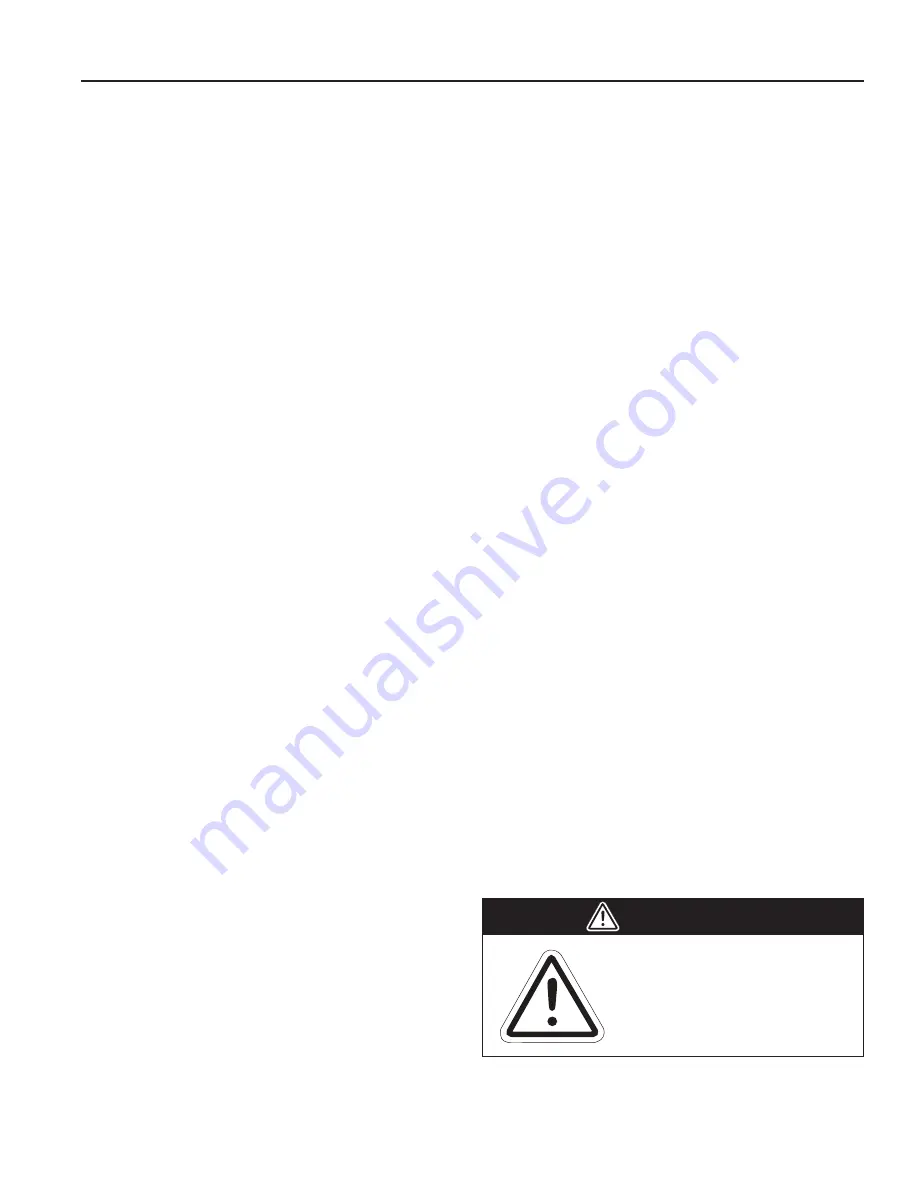
Page 21 of 80
9.3 Lineset Piping Installation
Read these instructions completely before proceeding
with piping.
Prepare to connect the two sections with clean
dehydrated refrigeration grade tubing. Recommended line
sizes can be found in Tables 3A-3F. In order to assure oil
return a velocity of 1,000 FPM must be maintained.
Locations where copper tubing will be exposed to
mechanical damage should be avoided. If it is necessary
to use such locations, the tubing should be enclosed in
rigid or flexible conduit.
Horizontal piping runs should be supported enough to
prevent high binding stresses in the tubing. The weight of
vertical piping may be either supported with riser clamps
bearing on structural members of the building or by a
platform at the bottom of the riser.
Supports should be strong enough to handle any load
by thermal expansion or contraction of the pipe so that
stresses will not be placed on the equipment to which the
piping is connected.
The suction line and both hot gas reheat lines (if included)
should be insulated with 5/8” minimum thickness
closed cell foamed insulation, to prevent sweating
or heat loss. All lines, except the liquid line, must be
insulated. However, on installations where the liquid line
is exposed to high ambient areas the liquid line must be
insulated to prevent sub-cooling loss. Refrigerant lines
run underground should be insulated with ¾” minimum
thickness closed cell foamed insulation. Suction horizontal
lines must be pitched toward the compressor unit, see
Figure 6.
When the air handler is installed at a higher elevation than
the compressor, provide a vertical loop in the suction line
adjacent to the air handler to a point at least to the top
of the evaporator coil. Do not insulate the refrigerant or
condensate drain lines until all joints in these lines are
leak tested.
For long vertical risers in both suction and discharge lines,
additional traps are recommended for each full length of
pipe (approximately 20 feet) to insure proper
oil movement.
Purge holding charge from the condensing unit by
opening both the high and low pressure gauge ports on
the condensing unit and allow holding charge to bleed off
to atmospheric pressure.
Drill a 1/16” bleed hole in the cap on the suction line fitting
of the air handler (larger of the two fittings) and allow
holding charge to reduce to atmospheric pressure.
Remove caps on the suction and liquid lines of the inside
section by drilling a small hole in the caps and then apply
heat to caps to remove. The caps are soldered to the
fittings with soft solder.
Carefully clean the suction line and liquid line fittings on
the outside and braze the refrigerant lines to these fittings.
Leave gauge port open until all brazing is completed. Low
pressure nitrogen purging is recommended while brazing.
9.4 Refrigerant Oil
All condensing units come pre-charged with a nominal
amount of oil for use with R-410A. Check the unit data
plate for the type of oil used in the system.
In split systems, additional oil must be added for
refrigerant charges in excess of 20lbs per system. The
installing contractor must add an additional ounce of oil
for each additional 2lbs of refrigerant added to any system
over 20lbs.
Tandem compressors add additional complexity and must
be handled with great care being charged. The individual
compressors are shipped with an initial oil charge as
well as separate sight glasses and oil equalization tubes.
During compressor assisted charging, it is important to
use only the first stage compressor draw in the refrigerant.
Since the tandem compressor has 2 oil pre-charges, the
oil added calculation for excess refrigerant starts at 40lbs
of R-410A. For tandem compressors, 7 ounces of oil must
be added for every 10lbs of R-410A added to the system
over 40lbs.
Oil can return to the crankcase for several minutes after the
compressor stops. Oil will only flow and equalize between
tandem compressors when both compressors are off. The
compressor with the higher oil level will only pass surplus
oil that is above the mid-point of the sight glass.
Units must have an oil level at, or above, the half-point of
the sight glass after being off for a period of 5 minutes or
longer, including both compressors in a tandem set.
CAUTION
PRODUCT DAMAGE HAZARD
Excessive oil within the system
can cause potential issues with
operation. The objective is to
provide a proper system oil charge
that is based on requirements.
RC/FC Series Installation, Operation, and Maintenance Manual






























